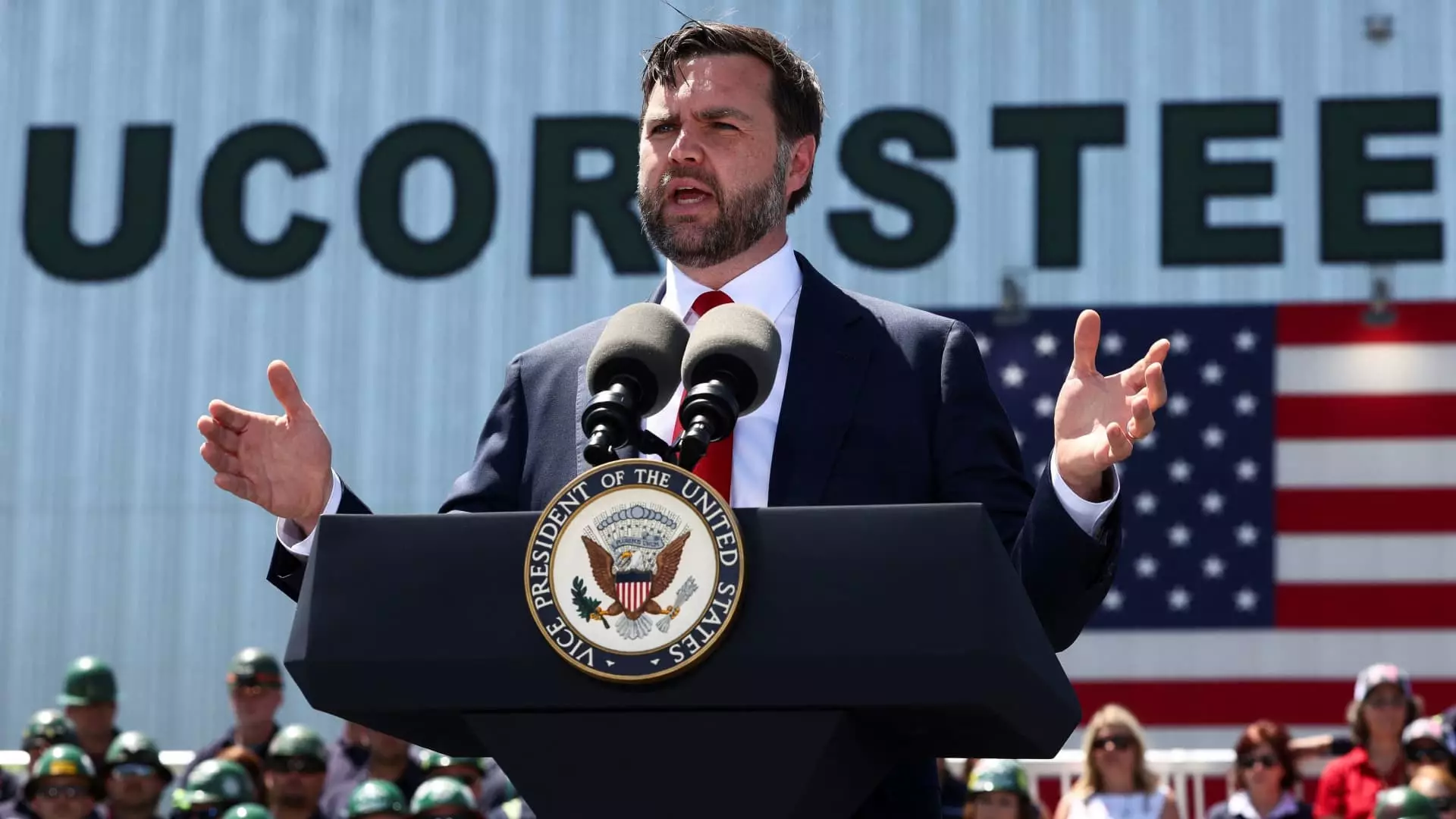The recent coordinated outcry from President Donald Trump and Vice President JD Vance regarding the Federal Reserve’s interest rate policies has raised eyebrows, but also concerns about the underlying motivations. With both leaders pushing for lower rates, their rhetoric seems less about economic merit and more about political expediency. The administration claims that easing monetary policy could solve a myriad of economic woes, yet this approach could very well masquerade as a blatant strategy to curry favor in the run-up to elections.
Vance labeled the Fed’s reluctance to cut rates as “monetary malpractice,” a statement that is both bold and misleading. By framing the conversation around malpractice, they shift the narrative away from the complexities of inflation management, suggesting that a simple cut in rates is a panacea. However, the very nature of economic policies and their interdependencies should caution us against such simplistic views.
Inflation: A Double-Edged Sword
Recent data from the Bureau of Labor Statistics indicated a modest increase in the consumer price index (CPI), which many would argue supports the case for a cautious approach from the Fed. With inflation levels currently hovering above the Fed’s 2% target, it seems reckless to advocate for lower interest rates without considering the broader implications. Vance and Trump seem to be using these figures selectively, emphasizing easing inflation data while disregarding the underlying complexities that often require a more nuanced fiscal approach.
As inflation sees momentary dips, the specter of tariffs looms large, potentially inhibiting any real benefits that a rate cut might provide. It is crucial to recognize that interest rates don’t operate in isolation; they are part of a larger economic puzzle. A sharp focus on the desired cuts could lead to unintended consequences, especially in a global economy already grappling with supply chain uncertainties and rising costs.
The Political Calculus Behind Rate Cuts
It is hard to ignore the political timing of this push for lower interest rates. With the Federal Open Market Committee (FOMC) set to make its decision soon, the administration likely hopes to leverage favorable economic conditions to bolster its image and voter confidence. The desire for a full percentage point cut is not merely about economic strategy—it’s about seeking political advantage during turbulent times.
Markets currently show a resistance to the idea of a rate cut, which underscores the skepticism regarding the administration’s motives. In a landscape where credibility is paramount, Trump and Vance’s campaign against the Fed could deteriorate trust in both economic institutions and the political fabric itself. Their claim of imminent economic doom, should the Fed refrain from cutting rates, feels hyperbolic and reckless in a landscape where responsibility should be prioritized over populism.
While the economic conversation is ostensibly about steering the country towards better financial outcomes, the underlying motivations reveal a deeper political game. As both leaders double down on their rhetoric, the question remains: Is this truly about economic recovery, or is it simply a tactic borne from a political necessity? With potentially disastrous ramifications on the horizon, we must challenge the narratives being set forth and demand a more thoughtful approach to the nation’s economic future.

